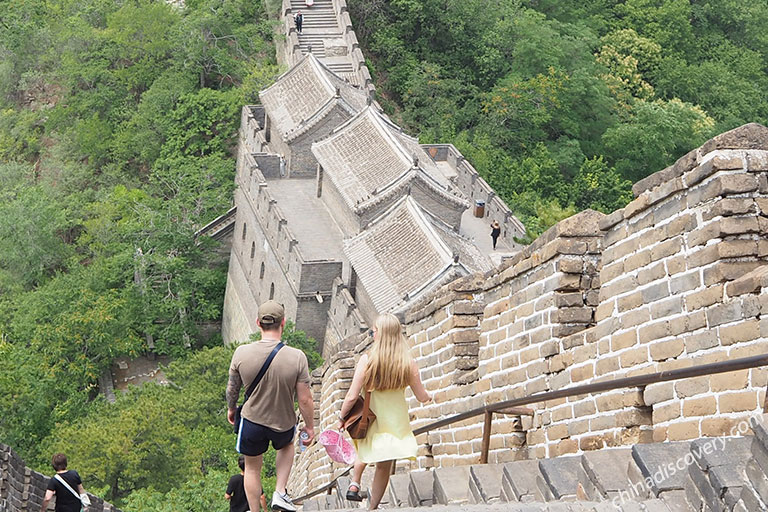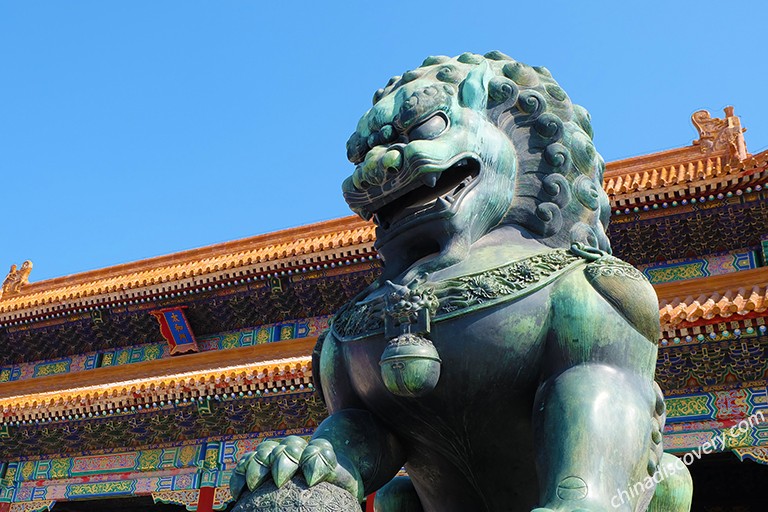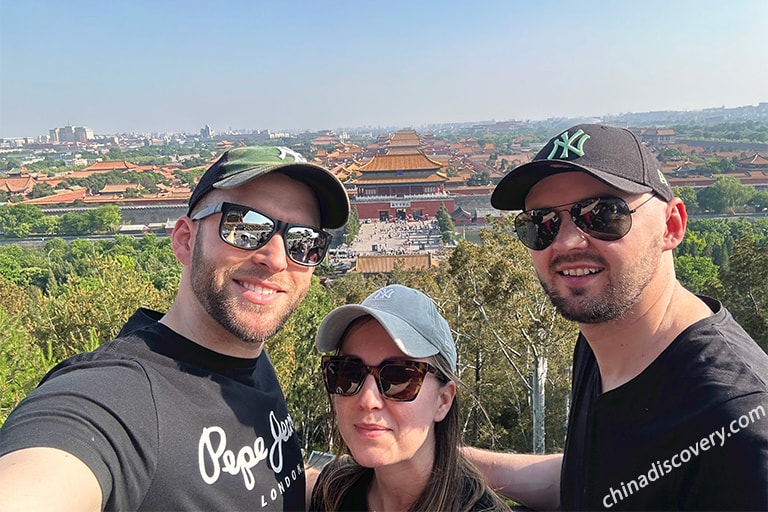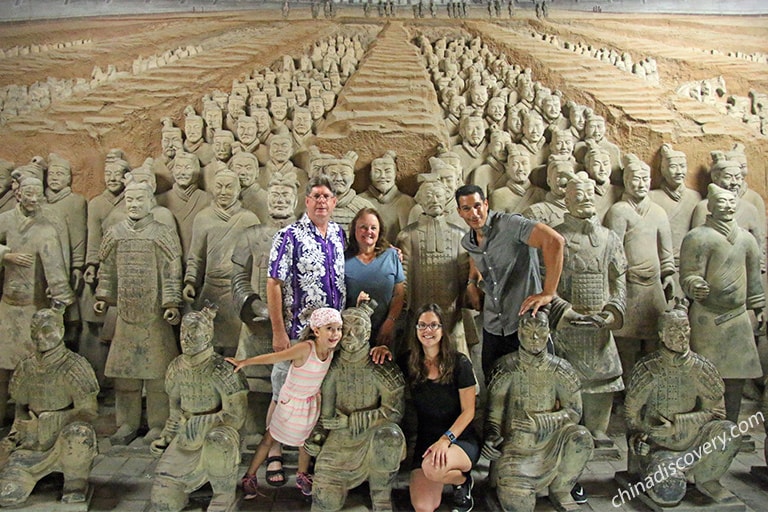How was the Great Wall of China Built?
Bricks, tiles, stairs and watchtowers on the Great Wall witnessed the laboring of the ancient Chinese people on building this magnificent long wall. So, Have you wondered about how the Great Wall, with a total length of more than 20,000km, was built?
Where to build the Great Wall?
The geographical condition of the Great Wall varies. The Great Wall passes through mountains, rivers and valleys, desert grasslands, etc. Therefore, in building the Great Wall, the artisans and militarists, took the advantage of the natural terrain to build walls, with passes, beacons, smoke piers, and castles, in order to achieving the purpose of defense.
The precious experience of "using terrains to build the wall" was created by the laborers from practice. This principle has been applied in the construction of the Great Wall in every dynasty since then. For example, walls of Juyongguan and Badaling were built along the ridge, because the ridge itself is like a big wall, and then the great wall would be even more steep.
How to Manage the Construction?
The construction management of the Great Wall is a very hard. Because the Great Wall stretches for thousands of miles, the construction site is very long and the construction management becomes even more complicated. The method took at that time was to divide the wall by sections. For example, in the Han Dynasty, the Great Wall of Hexi County was built by the four counties who would guard it and they were supposed to be in charge of the construction of the Great Wall in their respective territory. Of course, in large projects, each county should mobilize their people to build the wall and the central government would also send troops and labor from other parts of the country to build in key areas with them. During the Ming Dynasty, a stone tablet on Badaling Great Wall recorded the construction of the Great Wall of the Ming Dynasty (1582 A.D.) was found. It can be seen on the stone tablets that the manpower to build the Great Wall at that time was mainly from the army. Each section of the project used thousands of people, including officers and troops, plus many peasants.
How to Carry the Bricks?
The construction of the Great Wall is very arduous. Along the old Great Wall, it was hard to imagine that there was no advanced construction machinery and transportation tools, either in the mountains and deep valleys or in the desert grasslands. At Juyongguan and Badaling, you can see some giant stones which are three meters long and weigh more than two thousand kilograms. As the Great wall was built on steep ridges, even the visitors felt very hard to go up, and you can imagine how hard it would be for the people who built the Great Wall carrying more than 2,000 kilograms' stone.
In order to carry large quantities of earthwork, lime, boulders and bricks atop the hill. The builders came up with many ideas.
Manpower handling: This method is the most primitive one. Workers carried a large number of bricks, lime and stones to the mountain foot. At that time, people also adopted the method of transmission. They lined up at the foot of the ridge top, then passed the bricks and small stones one by one.
Simple Machinery: Some tools were also used in building the walls, such as trolleys, rolling timber and crowbar to transport heavy stones up to the hill, and winches were placed on the hill to hang huge boulders up the ridge. When transporting bricks and lime across ditches and narrow valleys, the method of "flying baskets", a kind of primitive cableway is also adopted, thus it greatly relieved the laboring.
Animal Carrying: It is said that goats and donkeys were used to carry lime and bricks in the basket when building the Great Wall on the Badaling Mountains.
How to Build the Wall without Concrete?
So before the invention of cement, what did the Chinese use to build houses? Why can the Great Wall enduring thousands of years without using concrete? The magic material to hold the bricks is sticky rice.
In the 6th century AD, a kind of construction material called sticky rice mortar was invented. The sticky rice soup was mixed into the lime mortar and a new composite mortar was formed. The strength of sticky rice lime mortar was much stronger than that of pure lime mortar. It was very strong. During the Ming and Qing Dynasties, many brick walls of buildings started to use the white sticky rice mortar. Enduring for the past several centuries, the Great Wall and Ming Dynasty are still standing, and some of them are even more rigid than modern buildings.
How to Plan A Great Wall Tour
There are several sections of the Great Wall around Beijing, each requiring about one day to visit, explore, and return to the city. For most travelers visiting Beijing, a trip to the Great Wall is a must-do. The Mutianyu Great Wall is a popular choice for many, as it offers stunning views, is less crowded, and is relatively close to Beijing. It is also equipped with convenient cable cars for easy access.
For hiking enthusiasts or those seeking a more in-depth experience, we recommend exploring some of the other iconic sections of the Wall. The Jingshanling Great Wall is one of the most scenic sections, while the Simatai Great Wall offers a more rugged, less-developed experience with a breathtaking night view. For a unique lakeside experience, visit the Huanghuacheng. If you're looking for a more traditional experience, the Badaling Great Wall is the most famous and beautiful, though it tends to be quite crowded. Since they are close to each other, the Mutianyu and Huanghuacheng sections can be visited in one trip, while Jinshanling and Simatai are often combined. A daytime visit to Jinshanling followed by a nighttime exploration of Simatai offers a unique experience you won't forget.
Top-Recommended Great Wall Hiking Tours
☛ 2 Days Jinshanling and Simatai Great Wall Wild Hiking
☛ 2 Days Jinshanling & Simatai Night Great Wall Tour
☛ 2 Days Mutianyu & Huanghuacheng Lakeside Great Walls Hiking Tour
If it's your first time in Beijing, don't miss the city's other iconic attractions, such as the Forbidden City, a masterpiece of imperial architecture, and the serene Summer Palace with its beautiful gardens and lakes. Be sure to visit the Temple of Heaven, a UNESCO World Heritage Site, or explore the Lama Temple for a taste of Tibetan Buddhism in Beijing. With so much to see, Beijing offers a rich blend of history and culture that’s sure to leave you inspired!
Top-Recommended Beijing Tours including Great Wall Experiences
☛ 4 Days Classic Beijing Tour Package with Mutianyu Great Wall
☛ 4 Days Beijing Essence Tour with Simatai Great Wall Night Sightseeing
☛ 4 Days Classic Beijing Tour with Jinshanling Great Wall Hiking
 Jinshanling Great Wall
Jinshanling Great Wall
 Mutianyu Great Wall
Mutianyu Great Wall
 Forbidden City
Forbidden City
Great Wall of China Facts
- Why was the Great Wall of China Built
- How Old is the Great Wall of China
- Can You See the Great Wall from Space
- Where is the Great Wall of China Located
- Who Built the Great Wall of China
- When was the Great Wall of China Built
- How Long is the Great Wall of China
- How Big is the Great Wall of China
- How Tall is the Great Wall of China
Great Wall of China Guide
Recommended Beijing Tours
Top 3 Beijing tours chosen by most customers to explore Beijing in the best way. Check the detailed itinerary, or tailor your own trip now with us.

8 Days Best of China Tour (Flight/Bullet Train Covered)
Beijing / Xian / Shanghai
Start planning your tailor-made holiday to China by contacting one of our specialists. Once inquired, you’ll get a response within 0.5~23.5 hours.
Customize a TripHave a question? Get answers from our travel experts or guests
- Your Question:
- Your Name:
- Your Email:
- Submit





















































